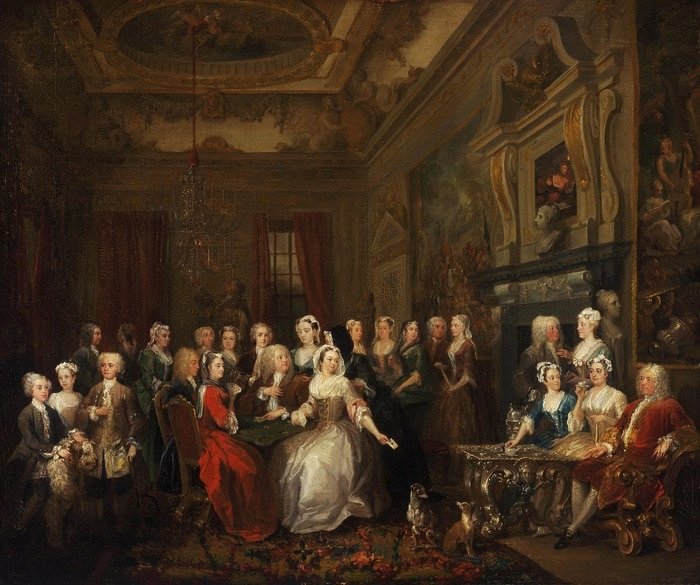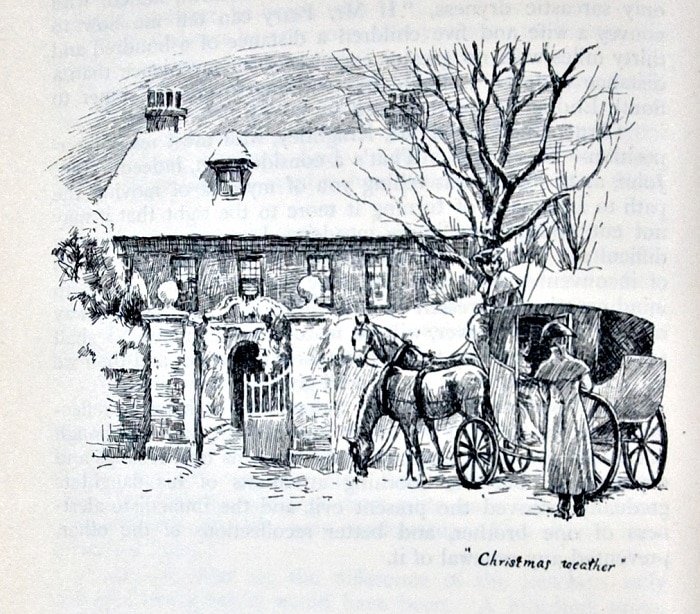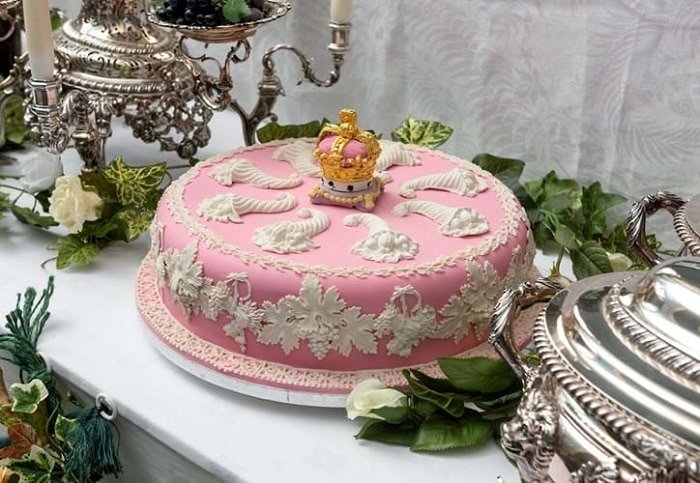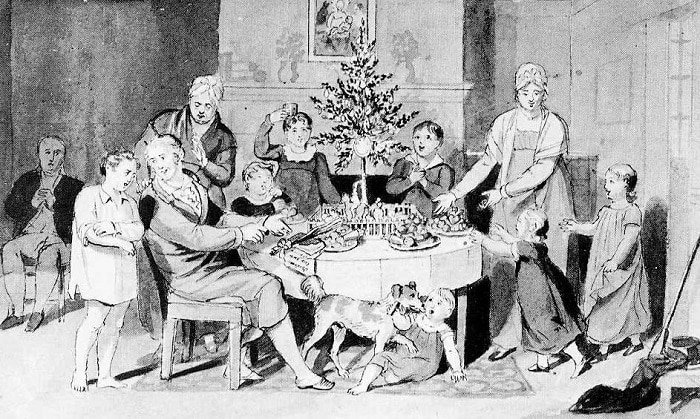
The Victorian era is perhaps the first period in history that comes to mind for most when thinking of a traditional Christmas. However, people had celebrated for centuries before in a variety of ways. Queen Victoria and Prince Albert may have helped to revive seasonal celebrations in the 19th century, but what was Christmas like before Victoria ascended to the throne? We take a look at Christmas during the Georgian period in the 17th century and beyond.
When was the Georgian Era?
The Georgian era spans more than 100 years and the reigns of four kings, so it is not surprising that there would have been a number of social changes. Those social changes in turn changed the way Christmas was celebrated.
In 1714, George I took the throne. He spoke no English and preferred to spend his time in his native land of Germany. Nevertheless, as we shall see, he had some influence on the dining habits of his subjects. When he did spend time in England, he did so at Hampton Court Palace, and, thanks to his craving for food from home, the palace’s kitchens underwent a major renovation, the first since the reign of Henry VIII. Nicknamed the “Turnip King”, he was a huge fan of fruit and salads. He also helped to popularize drinking chocolate.
In 1727, his son became King George II and would go on to rule for the next 33 years. His dining habits were more elaborate than those of his father and rather different to today’s tastes. Unearthed menus from his reign reveal meals of frogs, puffins, and baby birds.

Then in 1760 King George III, grandson of George II, began his 60-year reign. George III and his family spent much of their time living at Kew, and he took a great interest in agriculture and livestock, thus the nickname “Farmer George”. Sadly, many now remember him more for his declining mental health than for anything else, but his lengthy time on the throne oversaw many key changes in British history, including the start of the Industrial Revolution and the independence of the United States.
After his death in 1820, his son George IV (the former Prince Regent) sat on the throne until 1830.
What About the Regency Period?
The Regency Period was a specific part of the Georgian era. As George III’s health declined, his son, the Prince Regent, took more of an active role in matters of state. The question of a regent was first raised in 1790. However the King recovered before any changes were enacted. He fell ill again in 1810, and this time Parliament decided to act without the King’s consent. The Regency Period ran from about 1811 to 1820. It was marked by the prince’s extravagant tastes, much to the chagrin of Parliament who took some steps to rein in his lavish spending.

Georgian Christmas Celebrations
During the 17th century, the Puritan influence put an end to Christmas celebrations, condemning them as excessive. Christmas was a time for worship and little else, although it is likely that some households attempted to retain some festivities, albeit in secret. The restoration of the monarchy technically meant that the English could celebrate Christmas again. Thanks to a long history of religious division, however, many were still suspicious of their neighbors and therefore of celebrating openly. As such, festivities were still somewhat muted when George I took the throne.

When Christmas was celebrated again, the parties and feasts typically continued for twelve nights or more, concluding on Twelfth Night (January 5). There would be dancing, party games, and entertainment well into the early hours.
This began to change with the rise of the Industrial Revolution in the 1760s. An emphasis on production and a move away from the pastoral meant that people no longer had lengthy periods of leisure. Instead, Christmas, especially in working-class households, was now limited to one or two days.
Georgian Christmas Food
A typical Georgian-era Christmas feast might consist of cheeses, soups, turkey, goose, duck, and mince pies (suet replacing the original meat in the latter). Reputedly, George I helped to reintroduce the Christmas Pudding by having it served at his first official Christmas dinner. Whether true or not, this earned him the nickname “the Pudding King”.
One particularly spectacular festive creation was the Twelfth Night Cake. As the century progressed, this fruit cake became larger and more elaborate, decorated with frosting and sugar paste embellishments. Celebrating Twelfth Night would later be outlawed during Victoria’s reign, and the current Christmas cake took its place.

Prince Albert may has popularized the Christmas tree in the 1840s but George III’s wife Charlotte introduced the first Christmas tree in 1800. Some upper-class families also adopted the practice. Even before trees though, households decorated with lots of greenery – but not until Christmas Eve so it did not dry out and catch fire! People quickly removed all decorations after Twelfth Night to avoid bad luck in the coming year. Many households continue this tradition today.
Jane Austen
Our best literary insight into the late Georgian and Regency Christmas comes courtesy of Jane Austen. It was then, as now, a time for gathering with friends and family.
This is quite the season indeed for friendly meetings. At Christmas, everybody invites their friends about them, and people think little of even the worst weather. – Mr Elton, Emma

Depictions in Austen’s novels mention morning mass on Christmas morning. Afterwards, the wealthy would serve some sort of food and drink to the poorer members of the community. Gifts would have waited until Twelfth Night. If we move the cake and the gifts back to December 25th, we see that the festive celebration is not entirely unfamiliar to us – good food, good company, and a fun time to be had by all.
Merry Christmas!


